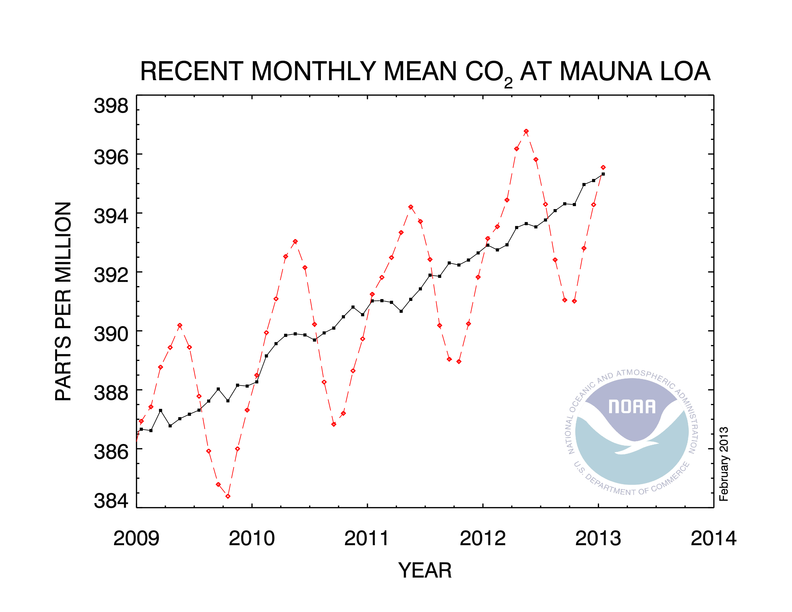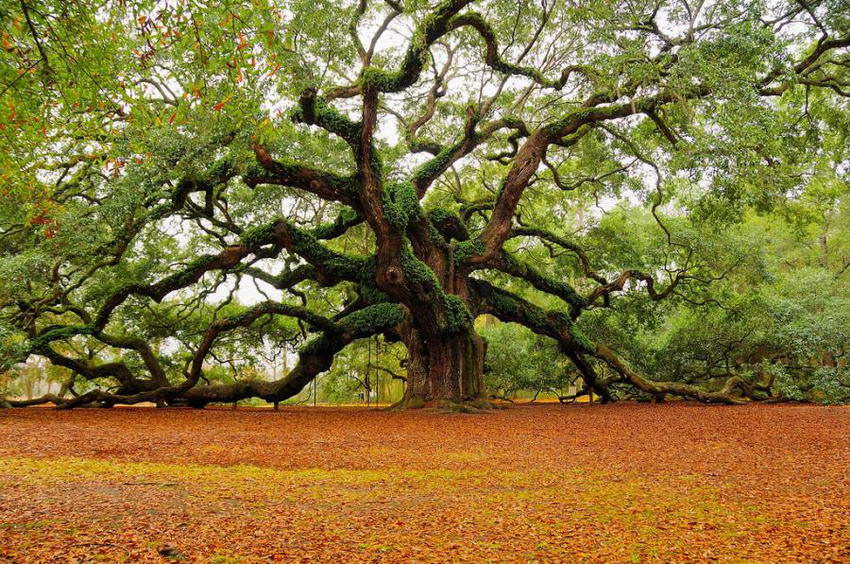The atmospheric carbon dioxide (CO2) concentration, as reported by the Mauna Loa Observatory in Hawaii, was recorded at 395.5 ppm1 (parts per million) as of January 2013. This value is consistent with the upward trend as measured since 1959 from this observatory. The maximum value Earth’s atmosphere should have, if we wish to sustain life on this planet in its current form, is 350 ppm2. Not only do we have much work to get there, but we first have to stop the rising trend which is moving in the opposite direction.

Latest CO2 Trends (National Oceanic and Atmospheric Administration – US Dept. of Commerce)
Copenhagen climate negotiators in 2009 argued to keep the increase in average global temperature below 3.6 °F or 2 °C. This target of low ambition would lead to a different planet, one with an ice-free Arctic and sea level rises of many metres3,4, affecting hundreds of millions of people and the planet’s fauna and flora. Currently, The Marshalls, Kiribati, and Tuvalu islands are already feeling the effects of rising sea levels. If we continue business as usual we are looking at an increase of 5.4 °F or 3 °C, which would result in a collapse of the Amazon ecosystem, sea levels 25 metres higher and huge terrestrial areas exposed to permanent drought. The Earth will be vastly different.

Already Kiribati is suffering from sea level rise. They are currently negotiating with Fiji to buy land for relocation. (Ciril Jazbec)
As is often the case, governments are slow to act, and even when the facts are simple and the case is clear, presidents and prime ministers have been fearful about affecting their re-election. A broader and more honest response is required. Such a response requires first understanding the gravity of the situation and then acting, or creating incentives for solutions. Richard Branson has done exactly that with the setting up of the Carbon War Room as well as creating the Virgin Earth Challenge where a $25 million prize will be awarded for an economically viable and environmentally sustainable way to remove greenhouse gases from the atmosphere. Current finalists have been announced.

A $25 million prize
Such a contest is to be welcomed and the technologies celebrated, but perhaps there is a simpler technology in our midst. One that is so familiar that we take it for granted, yet when absent, its lack is felt in barren landscapes and concrete vistas. I speak here of the tree. The first tree appeared in the mid-Devonian period 385 million years ago. As forests rose in the latter part of this period the Earth’s CO2 concentration was reduced which resulted in a cooling of the planet. We thus know this technology works.

Trees can be large and small, narrow and broad. But no matter their size, the carbon content of woody matter (trunk, branches and roots) is about 50 %. Researchers at Ecometrica derived a general equation for the mass of a tree based on its dimensions and calculated that a mature sycamore of height 12 m contains one ton of carbon. And this ton of carbon would have locked up 3.67 tons of CO2 from the atmosphere in a form pleasing to the eye and of much use to fauna and ecosystems. Simple is beautiful.
References
- Mauna Loa Observatory Data
- Hansen et. al. (2008). Target Atmospheric CO2: Where Should Humanity Aim?
- Mark Fischetti. 2-Degree Global Warming Limit Is Called a “Prescription for Disaster”. Scientific American Dec 2011.
- Robinson et. al. (2012). Multistability and critical thresholds of the Greenland ice sheet. Nature Climate Change 2, 429 – 432